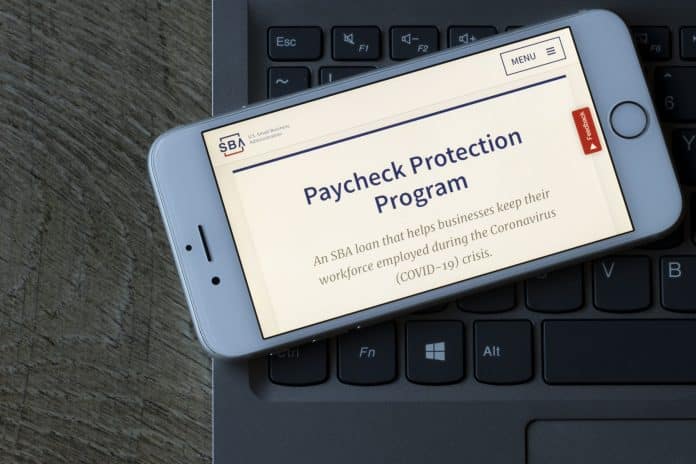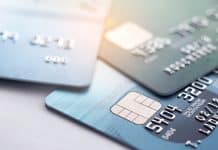
Payment Protection Program (PPP) Has Come To An End
The Payment Protection Program (PPP) officially ended on June 1st. It was a program that faithfully served many Americans throughout the pandemic. This happened as the program ran out of money. The Small Business Administration (SBA) decided to stop accepting applications to the program.
This marks the end of an ambitious emergency worth almost a trillion dollars. The main goal was to revive America’s businesses. Its importance was about protecting them from the economic fallout of the pandemic. The program enjoyed an impressive record of success. With it, the SBA helped millions of businesses out. However, it has also been the target of criticism. The SBA also had to deal with fraud claims and complaints that those who needed the support didn’t receive it.
The original plan was to end the program on the 31st of May. But a statement from the SBA last Friday (28th of May) indicated that the portal will close. This was mainly due to the “high volume of originations”.
PPP Loan Forgiveness
It was part of the ambitious $2 trillion Cares Act that came into effect in March 2020. The PPP was an initiative designed to offer financial support in the form of loans. As long it was evident that businesses were using these funds to avoid layoffs and for other essential costs, the loans would not require payback from its recipients.
If you have a business that got First Draw of the PPP Loans, you may be eligible to have the loan completely forgiven. It must be evident that the funds were used for:
- Maintaining staff and regular distribution of paychecks.
- Having 60% of the funds committed to financing payroll expenses.
- Keeping salary levels and other costs deemed eligible.
As for borrowers for the Second Draw for PPP, there are also conditions that will apply. Make note that these activities must have taken place within the duration of an 8-24 week period after loan disbursal:
- Your business avoided layoffs and ensured punctual paycheck distribution.
- The borrower must make sure that 60% of the funds were for payroll expenses.
- As a business, you must also be sure to maintain the appropriate salary levels. The funds are also for other eligible costs.
Since May 23, the SBA gave the go-ahead for almost 12 million PPP loans. It’s worth just under $800 billion for both the program’s first round (April-August 2020). This also includes it’s second round which started January 2021.
PPP Accomplishments
When the PPP’s general funding ran dry at the beginning of May, there were still some funds left. Community lenders could use them to give loans to some who might need them. The recent statement from SBA on May 28th indicated that community lenders have filed over 100,000 origination requests. It will take another month for the agency to process all the loan applications. Already, SBA has thousands of forgiveness requests to follow up on. There’s no indication that their work will finish anytime soon.
Records from the SBA’s annual financial reports indicates the significance of PPP as an initiative. At the end of the fiscal year 2020 last September, the agency’s loan portfolio was over $800 billion. That’s a big jump when you compare it to the previous year’s $143.5 billion.
And that’s not at all. Congress wants to throw even more responsibilities on the SBA. They want grant-relief programs for businesses working in the restaurant and live-event field! Being essential to revive America’s economic life, the PPP enjoys generous legislative support. The best part is it’s from both aisles of the political spectrum.
Estimates as to how many jobs it saved still remain to be unclear. But experts at MIT have indicated the PPP successfully boosted employment on a national level. They estimate that it saved over 2 million jobs in early June 2020. Another December 2020 study done by Michael Faulkender indicated that PPP saved over 18 million jobs. This is an impressive accomplishment given the severity of the economic circumstances. It’s important to note that the authors of this study based their estimate on analyzing unemployment insurance requests. This methodology was applicable on a county level.
Other Alternative Other Than PPP
Now, if your business missed out on the PPP loans, hope is not lost! You’ve got a couple of more options that you can explore. An option that should definitely be on your radar is the Economic Injury Disaster Loan. And what’s even better is that there’s been a deadline extension until December 31st. Working in the live venues sector? You may want to try the Shuttered Venue Operators Grant. If you have a restaurant, you can also look into the Restaurant Revitalization Fund.
Restaurant Revitalization Fund
The Restaurant Revitalization Fund (RRF) provides essential financial support. It’s now a lifeline for America’s struggling restaurants. The initiative has played a pivotal role in keeping America’s food and beverage establishments afloat. Additionally, the fund will seek to provide a cushion for pandemic-related revenue losses. This could be up to $10 million per business. Those who qualify and receive the loan are exempt from repayment. However, it required that relief funds are only for expenses deemed acceptable by the SBA.
Eligible organizations for this fund include:
- Restaurants
- Food stands, food trucks, food carts
- Caterers
- Bakeries
- Hospitality facilities (hotels, inns, etc.)
- Licensed beverage production facilities
RRF Application Process
Eligible candidates will find the application process fairly simple. They may apply through an SBA-recognized Point of Sale (POS) vendor. In addition, there is also a more direct online process. Candidates may apply through the SBA’s online application portal. POS providers that applicants may approach include Clover, Toast, and Oracle. They also use the NCR Corporation (Aloha). Registration beforehand on the online portal is not required for Toast or Square. In addition, it’s important to note the SAM.gov registration is not required. You won’t be needing DUNS or CAGE identifiers either. If you would like to see an application sample, you may do so here.
RRF Required Documents
Don’t start your application yet! You’ve got to make sure your papers are all in order. Here is a comprehensive list of documents that you will need to complete the application process successfully:
- Gross Receipt Documents: The required documentation for this category would include bank statements and financial statements (such as income statements, etc.). You should also include point of sale reports. Business tax returns (such as IRS Form 1120 or IRS Form 1120-S), IRS Forms 1040 Schedule C or Schedule F, IRS Form 1065 (if it’s a partnership), and IRS Form 1099-K
- Important for Tax Verification: Applicants must complete and sign IRS Form 4506-T. It is also possible to do this on the SBA online platform as well.
Businesses working in the hospitality industry would have to submit documents indicating that 33% of their gross receipts are from food and beverage sales on-site during 2019. Hospitality businesses that opened their doors in 2020 will have to show that they qualify based on their business models. They would have to demonstrate that food and beverage sales would be 33% of their gross receipts.
RRF Permissible Use of Funding
The following expenses are permissible for use of the funding:
- Paycheck and salary expenditures (including sick leave)
- Attending to mortgage obligations
- Paying the rent for the office or business property
- Payment of utility bills
- All business-related maintenance costs
- Building outdoor seating facilities
- Purchasing products essential for safety (such as cleaning materials and protective gear/items)
- Covering food and beverage costs (which can also include raw materials)
- Paying supplier-related and business operations expenses
If you’ve got any questions or need more information, you can always find informative answers. You’ll find them in the Restaurant Revitalization Funding Program Guide. It’s definitely a useful reference.
Shuttered Venue Operators Grant (SVOG) Program
As part of the Economic Aid to Hard-Hit Small Businesses, Nonprofits, and Venues Act, the Shuttered Venue Operators Grant (SVOG) Program is specifically designed to help venue businesses. Many of them had suffered heavy losses due to the pandemic. Luckily, SVOG is well-funded with up to $16 billion in grants. All of them are to help struggling venue businesses. Office of Disaster Assistance at the SBA manages this initiative.
Applicants who fit the requirements to qualify for these grants will receive funding. They’ll get a grant that will be equivalent to 45% of their gross revenue. The maximum that an applicant can get is a grant fund of up to $10 million, depending on the case. Some $2 billion will go to applicants fitting the eligibility requirement and have up to 50 full-time employees.
SVOG Application Process
Applicants can use the Shuttered Venue Operators Grant Application portal. Technical support is always available for applicants who need assistance. Additionally, it is essential that all applicants ensure that their documents are complete. All information on the application has to be accurate and informative. This is the best way to guarantee a smooth grant assessment process.
SVOG Grant Amount
Eligible candidates may be successful in getting the grant as long as it’s a credible entity. It must be in operation on January 1, 2019. For these types of businesses, they will get the equivalent to 45% of their gross revenue. This only applies to the gross revenue for the fiscal year 2019 (possibly $10 million or less).
For businesses operational after 1/1/2019, it’s a little different. The amount every qualifying business would get is equal to their monthly gross revenue for every complete month multiplied by six. In both cases, the maximum for the grant is always $10 million.
Rules for Use of SVOG Funds
The SBA is especially keen on ensuring that the funds that they give to America’s suffering businesses are effectively used. For this reason, credible business establishments should use their financial support wisely. Any extra spending that is outside of the grant’s guidelines could have serious consequences. America’s small business community needs to read, understand, and fully comprehend the spending guidelines. These rules are upheld by the grants, the SBA, and other related bodies.
Applicants who are successful in securing the grants should not use the funding to spend for any of the following:
- Purchasing real estate
- Paying loans that start after February 15, 2020
- Investing in securing additional loans
- Donating to political figures and/or political entities
It is, however, acceptable for grantees to use the funds for essential expenses. This can include payroll costs, utility bills, rent, mortgage payments, and business-related debts. Grantees can also use the financial support for paying independent contractors. Worker protection costs are also an essential investment for these funds. It can apply to operational costs (e.g. maintenance) tax payments, and administrative expenses. Fortunately, businesses can even settle expenses for capital expenditures, production, and advertising. Other financial obligations needed for performing arts production would apply, as well.
SVOG Required Documents
As a prospective applicant, you can access a complete application checklist. It is available on the SBA website. There are a number of important financial documents that are essential for the SVOG application to be complete.
- Income Statements or Profit & Loss Statements: These would be statements for 2019 and 2020. It is essential that the owner or a credible representative of the organization itself signs these documents.
- Tax Returns: Documents related to the tax returns of the fiscal year 2019 and 2020 are essential. They need to be part of the application for proper assessment.
- Standard Forms: There are also a number of required standard forms. These will need to be part of the application package. This will include SF-424 Family Drug-Free Workplace Certification, and other essential documents.


















